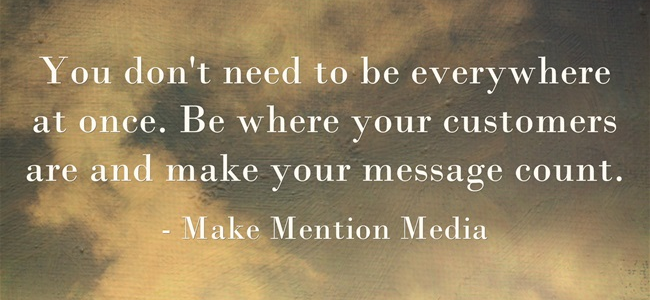Guest post By Jen Havice
Whether you are launching a new product or a service online, being efficient with your time and resources are a must. There’s so much to do and inevitably not enough hours in the day to get things done. Using social media to work for you is the key.
Have Your Ducks In A Row Ahead Of Time
Get your systems in place and tested well before your launch date. Chances are you might end up feeling a bit overwhelmed no matter how well you’ve planned things out. If you’re scrambling just to keep up with your regular influx of emails, think about how stressed out you’ll be remaining full steam ahead when it’s crunch time.
-
Get familiar with a management system such as Hootsuite. It allows you to post across several different social media channels from one hub. It’s free up to five profiles. The best part is that you can pre-schedule to Twitter, Facebook, LinkedIn, Google+ along with a few others. Plus, it’s an easy way to look at several profiles quickly to see who has been sharing your content and interacting with you.
-
Think about implementing a way to organize the content for your blog. A launch is not the time to abandon adding fresh content to your site. If you have a WordPress website, installing plugins that keep content writing on task can be a lifesaver. There is the Cleverness To Do List plugin which allows for the creation of an internal To Do list that can be shared between multiple users. The WP Editorial Calendar plugin provides a post overview of your blog with the ability to drag and drop pending posts to different dates. This makes it a lot easier to know where the content holes are by the week and month.
Be Interactive Not Reactive
Knowing what people are saying about you and your products are a good idea at all times. During a launch, it’s a critical time to engage with your target market by responding to questions or comments made via social media.
-
Whether it’s launch time or not, having search queries set up on Google Alerts makes good business sense. Google Alerts allow you to monitor the Internet to see who and what is being said about you, your product, service or competitors. Depending on your need, you can receive an email immediately, once a day or once a week.
-
Mention.net works in a similar way to Google Alerts but seems to be far more powerful. It does a far better job of finding mentions across the social media platforms and you can look at all your mentions in one place. It’s free for up to 3 alerts and 500 mentions per month.
Keep The Content Stream Alive
Encouraging the people buying your product to share your message and help promote you never should leave your radar screen. With everything else that needs to be managed it can be tough not only to come up with snippets of great shareable content but ways of getting others to do it for you.
-
Click To Tweet is a handy little tool that generates a custom link of whatever tweet you want to create. When someone clicks on the link, the message automatically gets added to that person’s Twitter status box. Basically, it creates a ready made retweet of whatever you want shared.
-
Graphics are always a great way of getting attention. Between Facebook and Pinterest, image quotes have become one of the most shareable pieces of content. However, spending any significant amount of time putting them together rarely makes much sense. Using either Quozio or Recite This makes short order of creating this kind of content. Quozio has a bookmarklet that when clicked will bring up a box on top of whatever web page you are looking at. This makes it extremely easy to highlight and paste whatever you want.
-
Quozio.com
You don’t need to be everywhere at once. Be where your customers are and make your message count.@jenhavice http://bit.ly/12g5r2u Click to Tweet
Give some of these a try and see what works for you. They may help implementing a launch a little less daunting and a whole lot more enjoyable.
 Jen Havice is a forty-something blogger, writer, and social media consultant. When not helping small businesses navigate the social networking jungle or writing commentary for her humor blog, she chases after two large dogs and rides an even larger horse. She and her husband call Minneapolis home.
Jen Havice is a forty-something blogger, writer, and social media consultant. When not helping small businesses navigate the social networking jungle or writing commentary for her humor blog, she chases after two large dogs and rides an even larger horse. She and her husband call Minneapolis home.






